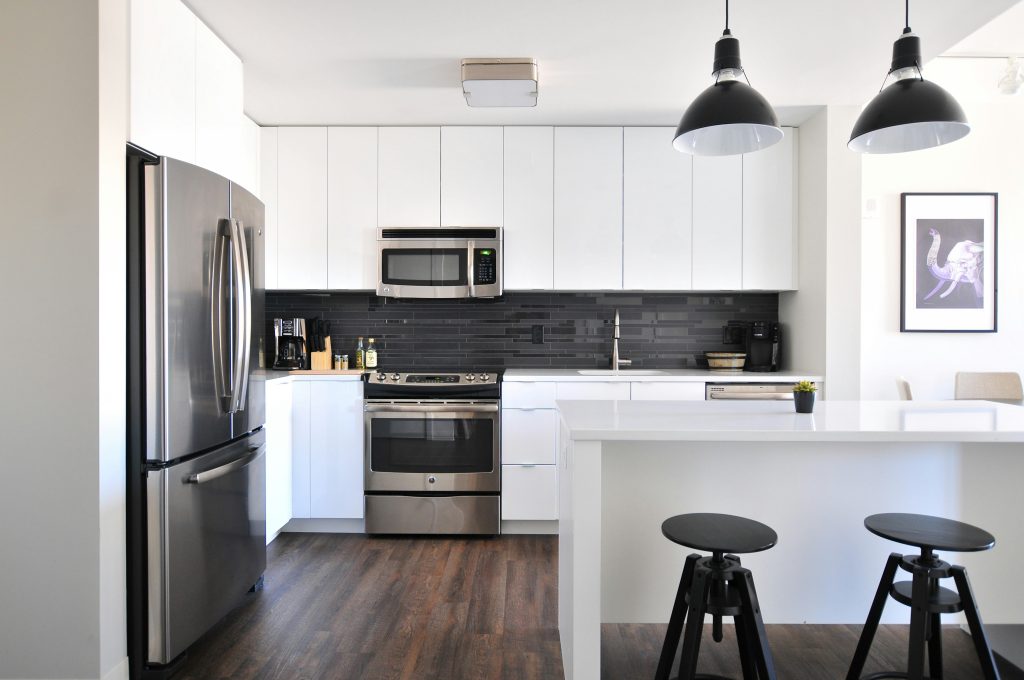
Are your kitchen cabinets looking tired and outdated? You’re not alone! Many homeowners face the dilemma of whether to replace or reface their cabinets. Let’s explore the best option for your kitchen transformation. Kitchen cabinets play a crucial role in both the aesthetics and functionality of your home, serving as a focal point in one of the most used spaces. In this post, we’ll help you make an informed decision between replacing and refacing your kitchen cabinets, ensuring your choice aligns with your style, budget, and needs.
Section 1: Understanding Cabinet Replacement vs. Refacing
1.1 What is Cabinet Replacement?
Kitchen cabinet replacement involves removing your existing cabinets entirely and installing new ones. This process allows for complete customization, enabling you to choose new materials, styles, and layouts that better suit your needs.
Pros of Replacing Cabinets:
-
Complete Customization: Tailor your cabinets to fit your kitchen’s layout and your personal style.
-
New Materials: Choose from a variety of materials that can enhance durability and aesthetics.
-
Improved Functionality: New cabinets can incorporate modern features like soft-close hinges and pull-out shelves.
Cons of Replacing Cabinets:
-
Higher Cost: Replacement can be significantly more expensive, often ranging from $100 to $1,200 per linear foot.
-
Longer Installation Time: The process can take several weeks, including design, ordering, and installation.
-
Potential for More Disruption: A full replacement can lead to more upheaval in your kitchen during the renovation.
1.2 What is Cabinet Refacing?
Kitchen cabinet refacing is a process that involves applying a new veneer or finish to the existing cabinet boxes and replacing the doors and hardware. This option is often more budget-friendly and quicker than a full replacement.
Pros of Refacing Cabinets:
-
Cost-Effective: Generally, refacing costs less than replacement, making it an attractive option for budget-conscious homeowners.
-
Quicker Turnaround: The process can often be completed in a matter of days.
-
Less Waste: Refacing minimizes the amount of material sent to landfills.
Cons of Refacing Cabinets:
-
Limited Design Options: You’re restricted to the existing layout and structure of your cabinets.
-
Existing Issues Remain: If there are underlying structural problems, refacing won’t address them.
Section 2: Factors to Consider When Choosing Between Replacement and Refacing
2.1 Budget Considerations
When deciding between replacement and refacing, budget is a critical factor. The cost of kitchen cabinet replacement vs. refacing can vary significantly. Replacement can range from $2,500 to over $30,000, depending on the materials and customization. In contrast, refacing typically costs between $1,000 and $3,500, making it a more accessible option for many homeowners.
Tips for Budgeting:
-
Set a clear budget before starting your project.
-
Consider financing options if necessary, especially for larger replacements.
2.2 Kitchen Layout and Structure
Assessing your current kitchen layout is essential. Is it functional? If your cabinets are in good condition but the layout doesn’t work for you, a complete replacement may be warranted. Kitchen layout considerations are crucial, especially if you plan to change the flow of your space.
2.3 Desired Aesthetic and Style
Your personal style preferences and current trends should guide your decision. Popular kitchen cabinet styles include two-tone cabinets, open shelving, and smart storage solutions. Refacing can help you achieve a fresh look without the need for a full overhaul.
2.4 Time and Convenience
Consider the time commitment for both options. Kitchen cabinet installation time can vary, but refacing typically takes less time than a full replacement. If you need a quick update, refacing may be the better choice.
Tips for Minimizing Disruption:
-
Plan your project during a time when you can manage without a fully functional kitchen.
-
Communicate with your contractor about timelines and expectations.
Section 3: The Environmental Impact
3.1 Sustainability of Refacing
Refacing cabinets is often more sustainable than replacement. It reduces waste and allows for the use of eco-friendly materials. Sustainable kitchen renovations can significantly lessen your environmental footprint.
3.2 Waste Management
Cabinet replacement can lead to substantial waste, as entire cabinets are often discarded. Responsible disposal of old cabinets is essential to minimize landfill impact. Consider donating usable cabinets or recycling materials whenever possible.
Section 4: Real-Life Case Studies
4.1 Success Stories of Cabinet Replacement
Many homeowners have successfully transformed their kitchens through cabinet replacement. For instance, a family in South Florida replaced their outdated cabinets with custom wood options, resulting in a modern, functional space that increased their home’s value.
4.2 Success Stories of Cabinet Refacing
On the other hand, a couple in California opted for refacing their cabinets, choosing a sleek, contemporary veneer that revitalized their kitchen without the hassle of a full renovation. The before-and-after images showcased a stunning transformation that aligned with their style.
Section 5: Making the Decision
5.1 Self-Assessment Checklist
To help you evaluate your needs and preferences, consider this kitchen cabinet decision checklist:
-
What is my budget?
-
What is the condition of my existing cabinets?
-
What style do I want to achieve?
-
How quickly do I need the project completed?
-
Am I concerned about environmental impact?
5.2 Consulting with Professionals
Seeking expert advice can be invaluable. Consult with reputable contractors or designers who can provide insights tailored to your specific situation and help you navigate the decision-making process.
Conclusion
No matter which option you choose, remember that your kitchen is a reflection of your style and needs. With the right approach, you can create a space that you love and that adds value to your home. We’ve explored the key points to consider when deciding between replacing and refacing your kitchen cabinets. Now, we’d love to hear from you! Share your experiences or questions in the comments below.
Additional Resources
For more insights, check out our related blog posts on kitchen renovations, DIY tips, and design trends. Don’t forget to download our PDF checklist to assist you in your decision-making process!

